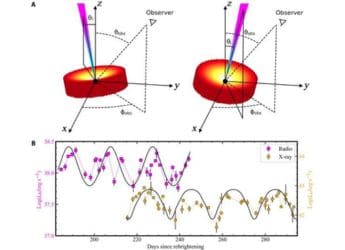- Home
- Science
- Science News
- US Forecast Agency Develops System That Will Warn About Possible Satellite Collisions in Earth Orbit
US Forecast Agency Develops System That Will Warn About Possible Satellite Collisions in Earth Orbit
The NOAA-developed system works in the way weather warning systems alert flights if they are in the path of a storm.

Photo Credit: YouTube/ @NOAASatellites
OADR alerts satellite operators if it finds any anomaly, giving them time to move their satellite
A growing number of players, including private companies such as Elon Musk's SpaceX, are trying to gain access to the lucrative space sector by launching new satellites. Because of this, space is getting increasingly crowded, raising the risk of collision among satellites. To deal with this situation, the US National Oceanic and Atmospheric Administration (NOAA) has developed a collision-warning system. It unveiled the prototype recently and hoped it will ease the burden on satellite operators considerably. The prototype is designed to alert operators when their spacecraft may be on a collision course with another object.
The NOAA has named the system Open-Architecture Data Repository (OADR) and it works in a way the weather warning system alerts flights if they are in the path of a storm. With a cloud-operated database, the system keeps a tab on the number of satellites in Earth orbit and warns if there's a risk of any collision.
The NOAA demonstrated the system during a live press conference on YouTube recently.
The OAADR works by collecting data from various sources – such as ground-based sensors, space weather observation centres, and satellite telemetry and maneuvering plans. It then creates a map of the orbital environment to see if there are any looming issues, including close encounters between orbiting objects. The OADR alerts satellite operators if it finds any anomaly, giving them enough time to move their satellite out of the way.
However, the system is not yet fully functional. It is under development and will take some time to deploy. The OADR team expects to deploy the system for the first time in 2024 and get it fully operational by 2025.
Currently, private trucking companies provide such data. But NOAA hopes OADR, when fully ready, will have more data than others and better prediction capabilities.
There are more than 23,000 objects in space with a diameter of 4 inches or greater, according to NASA. That number is rapidly growing with the space race heating up. “We expect on the order of 57,000 new satellites by the year 2030," Stephen Volz, assistant secretary of commerce for environmental observation at NOAA, said during the press conference.
Get your daily dose of tech news, reviews, and insights, in under 80 characters on Gadgets 360 Turbo. Connect with fellow tech lovers on our Forum. Follow us on X, Facebook, WhatsApp, Threads and Google News for instant updates. Catch all the action on our YouTube channel.
Related Stories
- Samsung Galaxy Unpacked 2025
- ChatGPT
- Redmi Note 14 Pro+
- iPhone 16
- Apple Vision Pro
- Oneplus 12
- OnePlus Nord CE 3 Lite 5G
- iPhone 13
- Xiaomi 14 Pro
- Oppo Find N3
- Tecno Spark Go (2023)
- Realme V30
- Best Phones Under 25000
- Samsung Galaxy S24 Series
- Cryptocurrency
- iQoo 12
- Samsung Galaxy S24 Ultra
- Giottus
- Samsung Galaxy Z Flip 5
- Apple 'Scary Fast'
- Housefull 5
- GoPro Hero 12 Black Review
- Invincible Season 2
- JioGlass
- HD Ready TV
- Laptop Under 50000
- Smartwatch Under 10000
- Latest Mobile Phones
- Compare Phones
- Redmi Note 15 5G
- Redmi Note 15 Pro 5G
- Redmi Note 15 Pro+ 5G
- Lava Play Max
- Poco C85 5G
- Honor Magic 8 Lite
- Jolla Phone
- Realme P4x 5G
- Asus ProArt P16
- MacBook Pro 14-inch (M5, 2025)
- OnePlus Pad Go 2
- Poco Pad M1
- Just Corseca Skywatch Pro
- Honor Watch X5
- Acerpure Nitro Z Series 100-inch QLED TV
- Samsung 43 Inch LED Ultra HD (4K) Smart TV (UA43UE81AFULXL)
- Asus ROG Ally
- Nintendo Switch Lite
- Haier 1.6 Ton 5 Star Inverter Split AC (HSU19G-MZAID5BN-INV)
- Haier 1.6 Ton 5 Star Inverter Split AC (HSU19G-MZAIM5BN-INV)

















